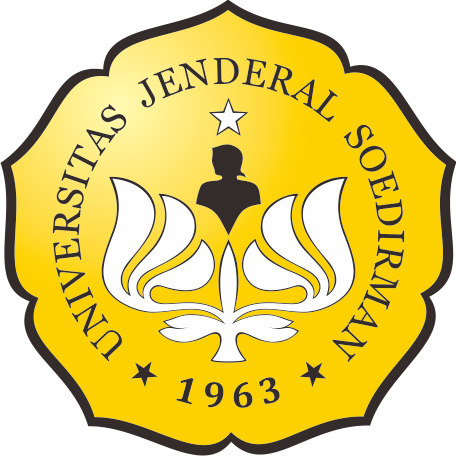KEANEKARAGAMAN LICHEN SEBAGAI BIOMONITORING KUALITAS HUTAN DI LERENG SELATAN GUNUNG MERAPI YOGYAKARTA
Abstrak
Kata Kunci
Referensi
Dobson, F.S. 1992. Lichens An Illustrated Guide to The British and Irish Species. Singapore: Stamford Press.
Eva, B. 2003. Lichen as Bioindicators of Forest Health, Biodiversity and Ecological Continuity. eva.barreno@uv.es (1 Januari 2011).
El Rhzaoui Ghita, Pradeep K. Divakar, Ana Crespo & Hikmat Tahiri. 2015. Biomonitoring of air pollutants by using lichens (Evernia prunastri) in areas between Kenitra and Mohammedia cities in Morocco. LAZAROA 36: 21-30. 2015 http://dx.doi.org/10.5209/rev_LAZA.2015.v36.49486
Hadiaty, M., Tri Rima Setyawati, Mukarlina, 2013. Kandungan sulfur dan klorofil thallus lichen Parmelia sp. dan Graphis sp. pada pohon peneduh jalan di Kecamatan Pontianak Utara. Protobiont 2013 Vol. 2 (1): 12 – 17 .
Hale, M.E. 1969. How to Know the Lichens. United State of America : WM.c. Brown Company.
Hale, M.E. 1974. The Biology of Lichens. London: Edward Arnold Ltd.
Hayward, B.W., Hayward, G.C., & Galloway. 1975. Lichens From Northern Coromandel Peninsula, New Zealand.
Kenkel, N.C. & Bradfield, G.E. 1986. Epiphytic Vegetation on Acer macrophyllum: A multivariate Study of Species-habitat Relationship. Vegetatio. 68: 43-53
Nash, H.T. 1996. Lichen Biology. Arizona: Combridge University Press.
Nayaka, S., Upreti, D.K., & Yadav, V. 2002. An Enumeration and New Records of Lichens From Sirmaur District, Himachal Pradesh (H.P), India. Phytotaxonomy 2: 49-63.
Paolo, G., & Giorgio, B, 2015. Sampling and Interpreting Lichen Diversity Data for Biomonitoring Purposes. © Springer IndiaD.K. Upreti et al. (eds.), Recent Advances in Lichenology, DOI 10.1007/978-81-322-2181-4_2.
Ramakantha, V., A.K., Gupta & A. Kumar. 2003. Biodiversity of Northeast India: on overview. Envis Bulletin: Wildlife and Protected areas, Conservation of Rainforest in India.
Rout, J., Pulakdas, & Uperti, D.K. 2010. Epiphytic Lichen Diversity in a Reserve Forest in Southern Assam Northeast India. Tropical Ecology. 2: 281-288.
Richardson, D.H.S. 1992. Pollution Monitoring With Lichen. England: Richmond Publishing Co. Ltd.
Roziaty, E., 2015. Identifikasi Lumut Kerak (Lichen) Di Area Kampus Universitas Muhammadiyah Surakarta. Proceeding Biology Education Conference (ISSN: 2528-5742), Vol 13(1) 2016: 770-776 .
Saipunkaew, W., Wolseley, P., & Chimonides , P.J. 2005. Epiphytic Lichen as Indicators of Enviromental Health in the Vicinity of Chiang Mai city, Thailand. The Lichenologist. 37: 345-356.
Suharti, R. 2013. Keanekaragaman Lumut Sejati Di Taman Nasional Gunung Merapi Sleman, Yogyakarta, SKRIPSI. IPB. Bogor.
Termina, M., & Nevo, E. 2009. Lichen of Israel: Diversity, Ecology, and Distribution. Biorisk. 3: 127-136
Article Reads
Total: 1829 Abstrak: 1737Refbacks
- Saat ini tidak ada refbacks.

This work is licensed under a Creative Commons Attribution-ShareAlike 4.0 International License.
This website is maintained by:
Bio Publisher
The Faculty of Biology Publishing
Laman ini dikelola oleh:
Penerbitan Fakultas Biologi
Universitas Jenderal Soedirman
Jalan dr. Suparno 63 Grendeng
Purwokerto 53122
Telepon: +62-281-625865
Email: biologi@unsoed.ac.id
Laman ini menggunakan:
OJS | Open Journal System
Software pengelolaan jurnal ilmiah online. Versi yang digunakan adalah 2.4.8.0.
Metadata artikel terdaftar di:
Crossref
Agen resmi internasional pendaftaran Digital Object Identifier (DOI)
Artikel jurnal ini terindeks:








